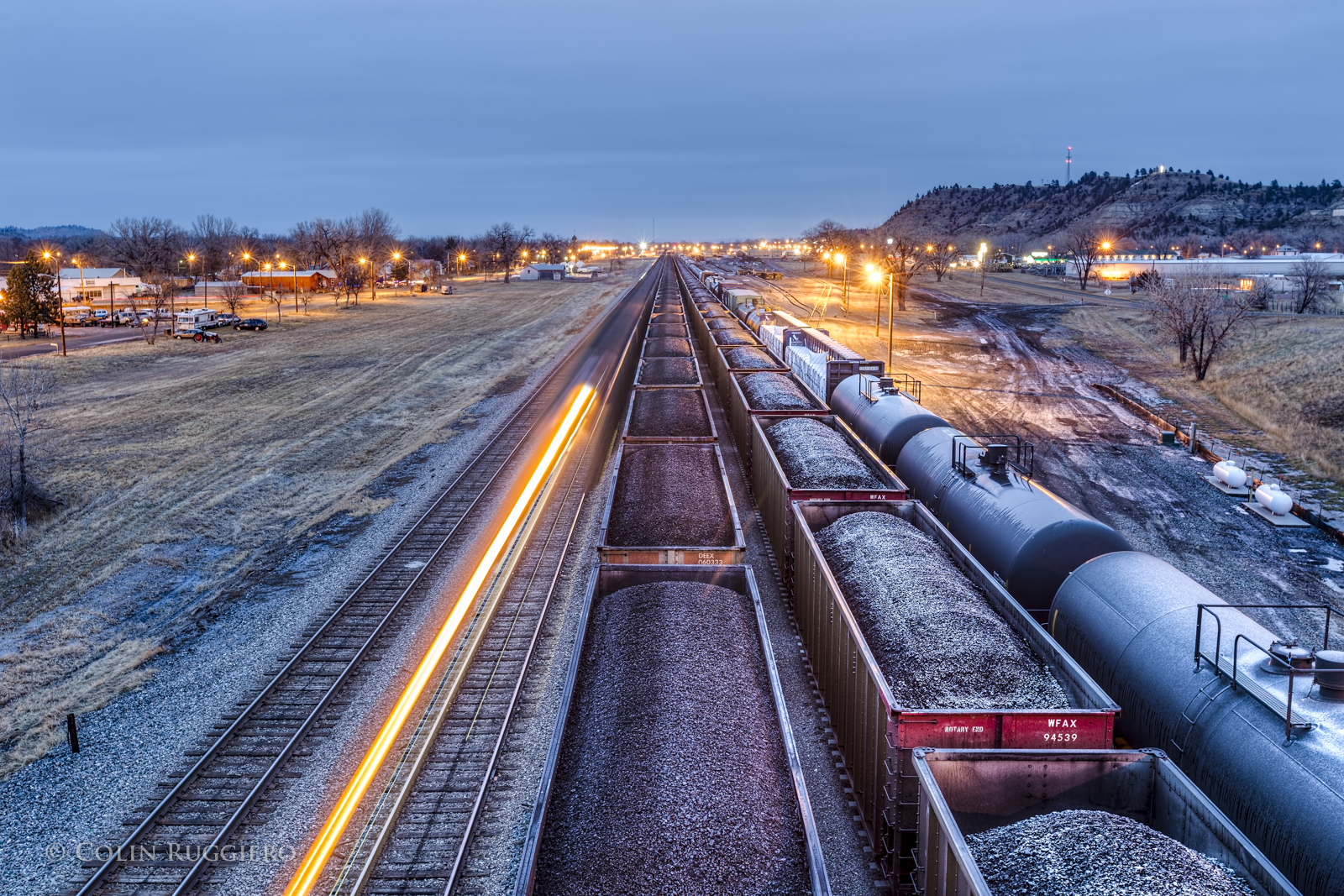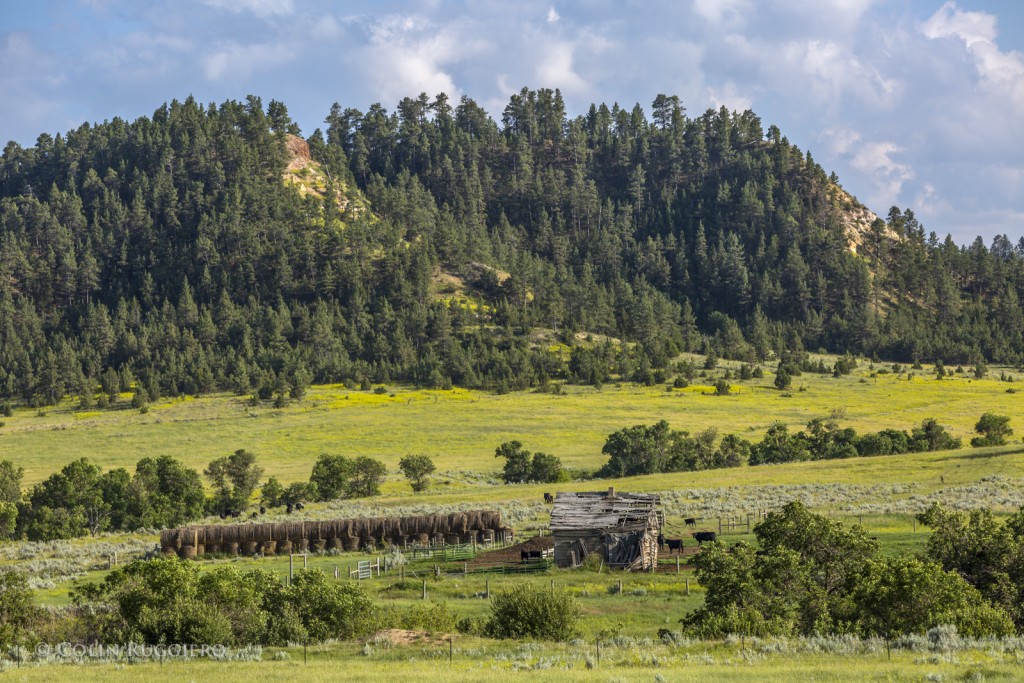What you need to know about the Tongue River Railroad draft Environmental Impact Statement

It’s here. On April 17, 2015 the Surface Transportation Board (STB) released the draft environmental impact statement (DEIS) for the proposed Tongue River Railroad (TRR) and I am just getting around to writing about it. I was prompted by a reader who commented on my last TRR blog, “why haven’t you written about this yet!!!” The answer is that I am trying to read and take notes and check references on thousands of pages of the DEIS (weighs about 20lbs) so I can write substantive comments in the short 60-day time frame the public has to respond to the behemoth. Yeah, that’s right folks. They can take years to produce the document and we get 60 days to respond to it. Please take a moment and send an email to Ken Blodgett (blodgettk@stb.dot.gov) at the STB and ask him to extend the public comment period.
The TRR DEIS is a document written by people who have spent zero to a couple weeks in southeastern Montana and their conclusions reflect that. I don’t think I’m overstating anything when I say that this is most poorly compiled EIS I have ever read.
Where do I begin?
The document is full of statements bordering on psychopathic in their attempt to make sure there aren’t any words used that would inspire emotions. For example, instead of using the word “people,” sometimes they use the word “viewer.” I could write a book on their use of Orwellian language in the document.
The DEIS is a long document that contradicts itself, ignores many issues we brought up in the scoping process and is full of absurdities such as:
“TRRC shall evaluate the feasibility of installing solar and wind microgeneration technologies on site offices, lodging, and other facilities to reduce the use of grid- or privately generated electricity in order to reduce greenhouse gas emissions.”
Ok. The STB is going to ask a coal company to voluntarily put solar panels on their rail facilities to reduce greenhouse gas emissions while they haul 20 million tons of coal/year. Thanks for thinking about the climate guys.
You can also read about impacts to rural viewers.
“Rural viewers could have construction activities occurring adjacent to their homes and agricultural buildings or nearby, evoking a sense of invaded privacy.”
First, rural viewers? What the hell is a rural viewer? We aren’t watching television. Second, a sense of invaded privacy? I can’t even think straight when I read this. Not a real, tangible, objective reality of a company taking your land and then building a rail line to haul coal on it, just a sense of it. Here’s how they should say it: People who live on the Tongue River will have their privacy invaded and potentially their land taken from them against their will.
Then, there is this gem.
“The results are presented in Table 5.2-17 and show that, depending on the scenario, net accumulated life-cycle GHG emissions from 2018 to 2037 could be slightly greater (1.7 MMTCO2e) under the No-Action Alternative.”
If Arch Coal doesn’t build a 1.5 billion ton coal mine and accompanying rail line, climate change will be worse. Seriously. How’s that for some black magic analysis.
Do you need more?
How about the fact that ICF International, the third party consultant who completed the DEIS for the STB, is also the consultant hired to complete the environmental analysis on the Longview coal port terminal in Washington state. Arch coal is 33% owner of the Tongue River Railroad Co. and a 38% shareholder in the proposed Longview terminal where they want to start shipping Montana coal to Asia. Also, ICF’s project manager has a degree in City Planning, their lead on cultural resources is an architectural historian and their fish resources analyst has a degree in Marine Biology.
They also write about “potentially induced mines” and refer to the defunct Montco mine and a potential Canyon Creek mine as mines that could open as a result of building the TRR. They write this so the railroad company can claim that the TRR isn’t a spur and therefore, if permitted, will have the power of eminent domain to condemn productive agricultural land. We all know there is never going to be a coal mine on the old Montco site and even less chance of there being a coal mine on the Canyon Creek site.
Enough. I have to go to Miles City right now or else I’d go on. Sorry if there are any typos, grammatical errors or a general lack of conciseness. I am in a hurry today and didn’t have time to edit.
I’ll be writing more about the DEIS focusing on specific chapters in the coming weeks leading up to the public hearings. Below you will find the in person hearing times and locations. There is also an hearing that will be held online that you can register for (see below and click on the link to register). Please contact me if you have any questions about attending the hearings, the substance of the DEIS or submitting your own comments. You can email me: abonogofsky@gmail.com.
As always, participating in action alerts is always good but writing your own comments is even better. Here is a link to the DEIS: http://www.tonguerivereis.com/draft_eis.html
Public Hearing Times and Locations
- June 8, 2015, 2:00-4:00 pm and 6:00-8:00 pm at St. Labre Indian School, 1000 Tongue River Road, Ashland, MT
- June 9, 2015, 2:00-4:00 pm and 6:00-8:00 pm at Miles Community College, Room 316, 2715 Dickinson Street, Miles City, MT
- June 10, 2015, 2:00-4:00 pm and 6:00-8:00 pm at Colstrip High School, 5000 Pinebutte Drive, Colstrip, MT
- June 11, 2015, 2:00-4:00 pm and 6:00-8:00 pm at the Northern Cheyenne Tribal Building, Council Chambers, 600 South Cheyenne Ave, Lame Deer, MT
- June 12, 2015, 2:00-4:00 pm and 6:00-8:00 pm at Forsyth High School, 917 Park Street, Forsyth, MT
In addition, OEA will hold two online public meetings intended for people who cannot attend the public meetings in the project area. All interested individuals must register to attend the online public meeting and to provide formal comments. Individuals are allowed to register to speak once. Additional meeting information and dial-in instructions will be provided at registration. OEA will begin each online public meeting with a brief overview of the proposed project and environmental review process, followed by a facilitated formal comment session. If time permits, the facilitator will allow other interested individuals who did not pre-register to provide oral comments. Interested individuals can participate in the meeting via phone, computer, or both. The meeting transcripts will be available on the project website after the meetings. The online public meetings will be held on the following date and times:
Written comments may be mailed to the following address:
Ken Blodgett
Surface Transportation Board
395 E Street, S.W.
Washington, DC 20423
ATTN: Office of Environmental Analysis
Docket No. 30186
Comments may also be submitted electronically by clicking here.


This is an email that I sent to the Yellowstone County Commission, the Billings City Council and media in Billings. Do not forget to write a letter/email to your local papers and your local government.
Letter:
The draft Environmental Impact Statement for the Tongue river Railroad has been out for some weeks. The statement is posted on the internet by the Surface Transportation Board; the link is http://www.tonguerivereis.com The proposed coal-hauling railroad would connect the proposed Otter Creek strip mine in southeastern Montana to existing Montana rail lines. The railroad line would cost several hundred million dollars. The coal would be shipped to proposed coal ports on the West Coast for export to Asia. The impact statement projects that if built the Otter Creek Mine and the Tongue River Railroad would add at least 8 unit coal trains a day to the existing BNSF rail lines. By 2030 the number of unit coal trains could double to 16 a day.
The Wyoming legislature just authorized the issuance of one billion dollars worth of Wyoming state bonds to build coal ports on the West Coast. The Attorney Generals of both Montana and Wyoming have announced that they would sue if the States of Oregon and Washington did not authorize the ports. There is a strong probability that at least one West Coast port will be built.
The draft Environmental Impact Statement which was prepared by a company paid by the Tongue River Railroad is remarkable for what it does talk about and even more remarkable for what it doesn’t talk about. The Surface Transportation Board required that the Environmental Impact Statement address the impact of increased coal train traffic from Otter Creek on existing rail lines, e.g., the BNSF line running through southern Montana, and on communities along existing lines. While the draft impact statement talks of potential impacts from Forsyth, Montana east to Minnesota, there is no mention of potential impacts of the 8 to 16 additional unit coal trains on exiting railroad traffic going to the West Coast, e.g., unit grain trains, or on communities on the BNSF line to the west, e.g., Billings, Livingston, Missoula, etc.
That’s right although the Otter Creek Mine’s purpose is to the produce coal for Asian markets, the impact statement fantasizes that the coal will be shipped to the Midwest. I wish this was a joke but it isn’t. Just as sitting on 27th Street waiting for a coal train to pass through Billings is not a joke.
Finally, there are public hearings which will be held in this immediate area of the railroad starting with
June 8th 2-4pm & 6-8pm at St. Labre Indian School in Ashland;
June 9th 3-4pm & 6-8pm Miles City Community College, Rm 316; and
June 10th 2-4pm & 6-8pm Colstrip High School.
Although communities and individuals requested public hearings in other impacted Montana communities, e.g., Billings, Helena, Missoula, Livingston., etc. no hearings are scheduled in these communities.
There is an online hearing which will be held on June 17th 12-3pm & 6-9pm (EST) To participate you must register at http://www.tonguerivereis.com
The EIS makes a very fundamental mistake when it does not address the cultural impact of the Tongue River Railroad on a minority religious community, that is, the Amish/Menonite families, that live in the Tongue River Valley very close to the Otter Creek Mine and the Tongue River Railroad. A railroad may disrupt their way of life significantly.